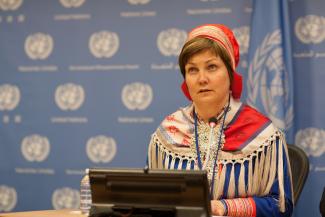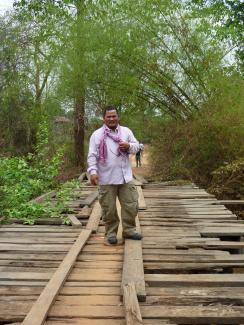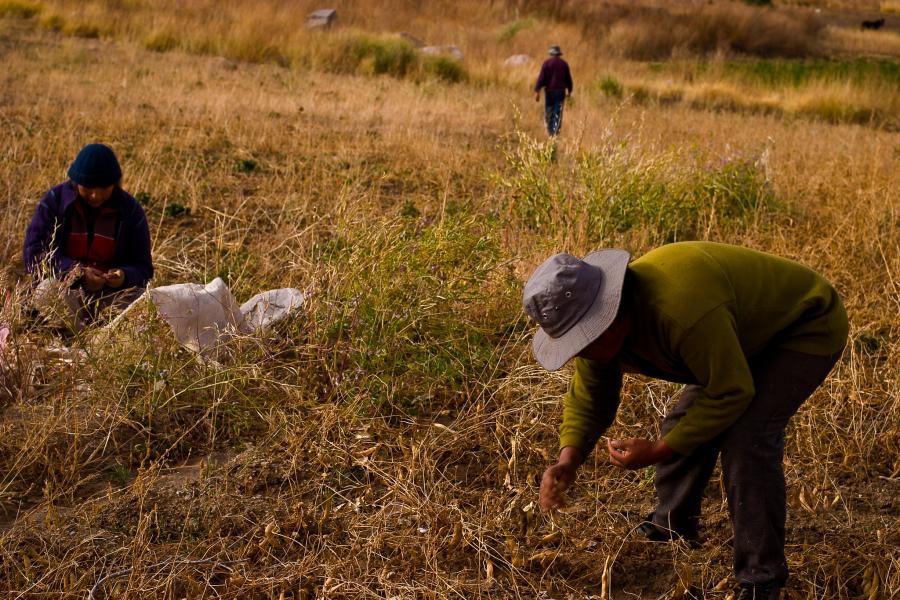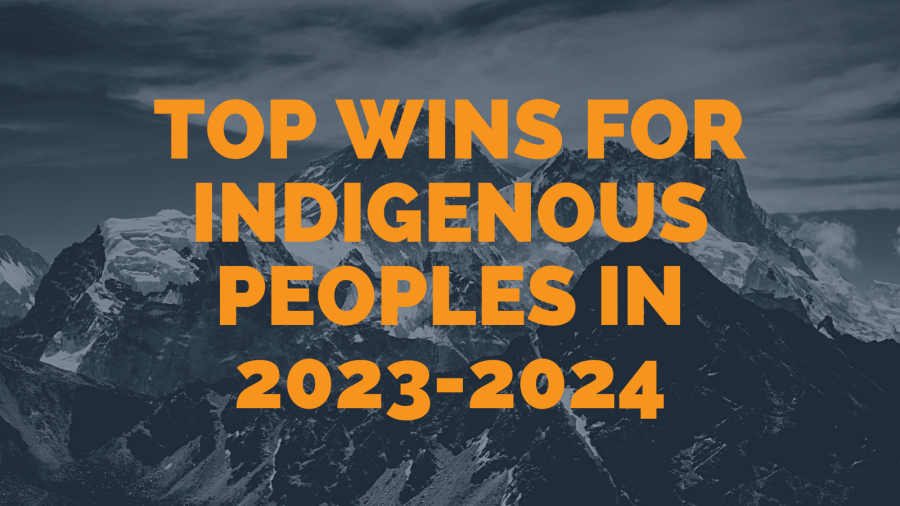

Aili Keskitalo (Saami)
President of Saami Parlaiment in Norway
We Saami are the people of the Arctic, and research is showing that Climate Change is happening faster here than in any other parts of the world. We are here at COP 21 to give evidence on the climate change in the Arctic, but also to try and influence State leaders on topics that they may not consider technically related to the climate itself. We try to remind them that in this world there are [many] peoples and languages, and that it’s all affected by climate change. Do not forget that!
Since we are politicians from the Saami parliament in Norway, we try to influence the Norwegian politicians and Norwegian delegations that are taking part in the negotiations. We also would like to say that isn’t only the rainforest when it comes to climate change; it’s also the Arctic areas.
I think we are probably only in the early steps of detecting and documenting climate change in our areas. We see that climate changes are affecting our traditional livelihoods like fishing and reindeer herding. Luckily, we have Saami researchers working on systemizing traditional knowledge so that it can be used in resource and land management.
I’m happy to hear that Norway is working on getting regular reviews on the upcoming agreement. I think that is the right step forward to not only have an agreement on what to do, but to check that it will really be implemented. At this stage we are still carefully optimistic about COP 21. It’s probably the most important meeting that we ever will have the opportunity to take part in. We hope to see a binding agreement between the states of the world and we hope to see emphasis in the agreement put on human rights and Indigenous rights.
Som Chanmony
Executive Director, Peace Bridges Organization, Cambodia
Our work is to support different groups, including Indigenous Peoples, who need to fight for their rights, their land, their homes, and their forests. The communities we work with have expressed great concerns regarding climate change. This year they have not had enough rain for their agriculture. In some other areas there are big storms destroying houses and schools. It affects particularly the poor families who have smaller homes easily destroyed by the strong winds.
I think that Indigenous Peoples never cause any forest destruction. They always allow for the recovery of the nature or the forest. There is always a dependency between the Indigenous Peoples and the forest that they live in, so there has always been a balance between them. Their way of life, including relying on traditional herbs and medicine and non-timber products are proof that they are not harmful to nature, that they are not creating any damage to the environment.
It’s only the government and the private companies that come in and clear the forests and take their land away—that is when they start to have a problem with their livelihoods. Now they also have to deal with climate change.
In regards to COP 21, I think there is a positive sign. I believe that this meeting allows for the opportunity for multistakeholders to express their concerns in relation to climate change. They specifically give room for Indigenous Peoples to tell their stories at the Indigenous Peoples Pavilion, such as their successes in dealing with climate change. However, I question how the COP can actually reach the country leaders. For example, in Cambodia we have a lot of beautiful dialogues here about the knowledge, experience, and livelihoods of Indigenous Peoples and how they have been both the victims and the solutions for climate change. But we haven’t had enough attention from our Cambodian delegates here at COP. They won’t bring home the necessary information for the reform or reinforcement of any existing policies back in Cambodia.
I was told that some of the developing countries like Cambodia are coming out to this COP 21 only to negotiate for funds. These are to be given to governments in order to cope with climate change or to assist them with climate adaptation. However, once they receive this money, the question is still how they will actually implement solutions in their own country. To be honest, a lot of Indigenous Peoples don’t receive any benefits out of this money that is being provided.
Whatever the good agreement that COP 21 has reached, it is only just in principle and hardly will be applied to a country like Cambodia. There has to be ongoing monitoring on how the agreement is being applied, in particular in developing countries like Cambodia, especially in regards to corruption. The people fear that there is no real political will to make any substantial changes.
Chanomy photo courtesy of Som Chanmony.
Keskitalo photo courtesy of UNPFII/Broddi Sigurdarson.



